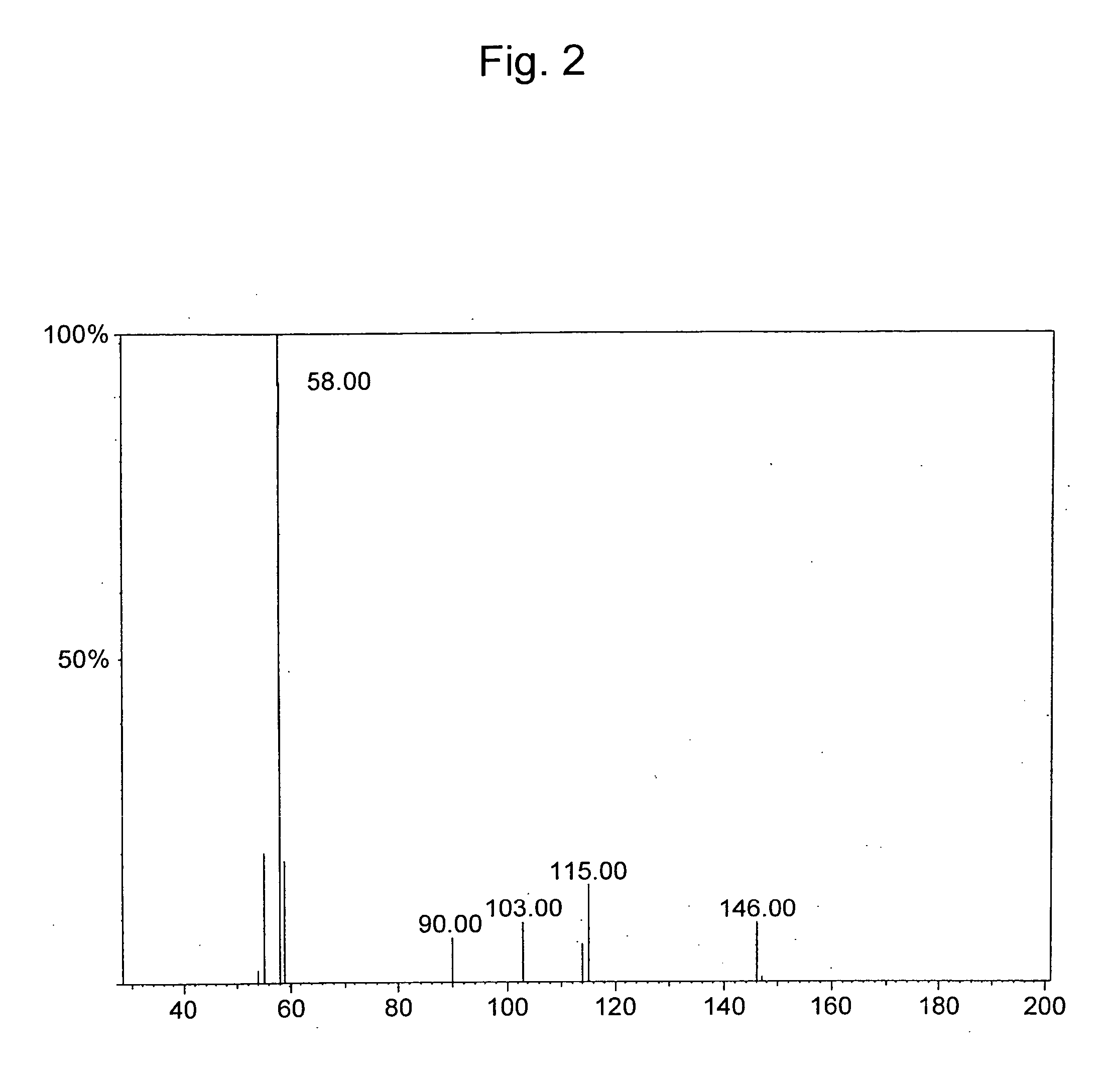Method for producing lactic acid
a technology of lactic acid and production method, which is applied in the preparation of carboxylic compounds, organic chemistry, microorganisms, etc., can solve the problem of difficulty in preparing lactic acid with sufficient optical purity via conventional fermentation method, and achieve the effect of high optical purity
- Summary
- Abstract
- Description
- Claims
- Application Information
AI Technical Summary
Benefits of technology
Problems solved by technology
Method used
Image
Examples
experimental examples
[0088] Prior to describing examples to which the present invention is applied, it is verified that the reaction represented as the above formula occurs in practice. In this experimental example, it was verified that the chemical reaction between glycerol and lactic acid and the chemical reaction between ethylene glycol and lactic acid could occur in practice.
[0089] First, a solution was prepared, in which L-lactic acid was mixed with glycerol or ethylene glycol at a ratio of 1:2 (molar ratio). Then, p-toluenesulfonic acid was added to the solution, followed by heating (at 150° C. for 15 hours) under ordinary pressure while water contained in the solution was being evaporated.
[0090] After the termination of the reaction, the solution was dissolved to chloroform (1% to 10% by mass), followed by GC-MS analysis. Upon GC-MS analysis, a quadrupole mass spectrometer (JMS-AM SUN200, JEOL) and a column (DB-1, J&W Scientific) were used under the following conditions: injection temperature: ...
example 1
[0095] According to the above experimental examples, it has been suggested that lactic acid with high optical purity can be produced by reducing the amount of glycerol in a solution prior to allowing lactic acid in the solution to be subjected to concentration by heating. Thus, in this example, it was demonstrated that production of lactic acid with high optical purity was possible by a fermentation method using a lactic acid-producing microorganism, in which a gene involved in glycerol production has been disrupted.
[0096] Creation of a Strain Containing a Disrupted Gene
Production of a Strain Containing Disrupted GPD1
[0097] A yeast having the capacity for lactic acid production that had been produced according to JP Patent Publication (Kokai) No. 2003-259878 A (JP Patent Application No. 2002-65879) was allowed to form spores in a spore-forming medium (1% potassium phosphate; 0.1% yeast extract; 0 / 05% dextrose; 2% agar), followed by diploidization utilizing homothallism. Then, a ...
example 2
[0118] In this example, it was demonstrated that production of lactic acid with high optical purity was possible by removing glycerol produced by lactic acid-producing bacteria, followed by allowing lactic acid to be subjected to concentration by heating.
Lactic Acid-Producing Bacteria and Fermentation Method
[0119] A lactic acid-producing microorganism used in this example was Saccharomyces cerevisiae used in Example 1, to which the capacity for lactic acid production was imparted, except that GPD1 and GPD2 genes were not disrupted therein. Also, in this example, a fermentation method was performed under similar conditions of Example 1.
[0120] The concentrations of L-lactic acid and glycerol upon termination of fermentation were 8.6% by weight (equivalent to 10.2% by weigh of ammonium lactate) and 0.7% by weight, respectively. The optical purity of L-lactic acid was 99.71%.
Removal of Glycerol
[0121] In this example, first, cells were separated from a culture solution obtained by...
PUM
| Property | Measurement | Unit |
|---|---|---|
| temperature | aaaaa | aaaaa |
| temperature | aaaaa | aaaaa |
| optical purity | aaaaa | aaaaa |
Abstract
Description
Claims
Application Information
 Login to View More
Login to View More - R&D
- Intellectual Property
- Life Sciences
- Materials
- Tech Scout
- Unparalleled Data Quality
- Higher Quality Content
- 60% Fewer Hallucinations
Browse by: Latest US Patents, China's latest patents, Technical Efficacy Thesaurus, Application Domain, Technology Topic, Popular Technical Reports.
© 2025 PatSnap. All rights reserved.Legal|Privacy policy|Modern Slavery Act Transparency Statement|Sitemap|About US| Contact US: help@patsnap.com



